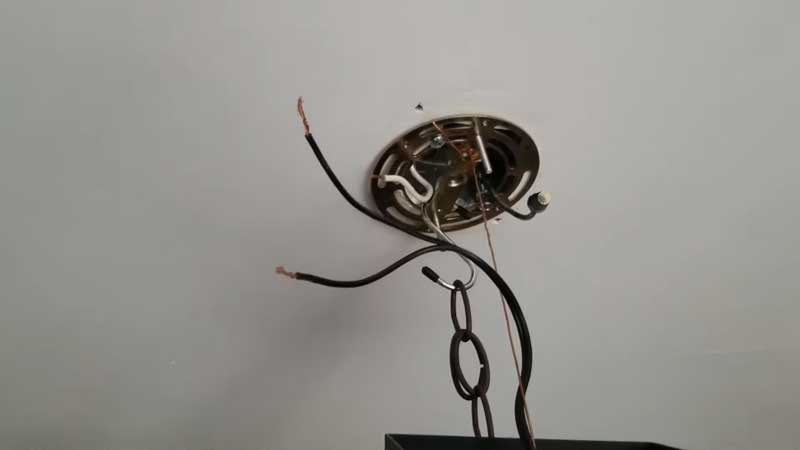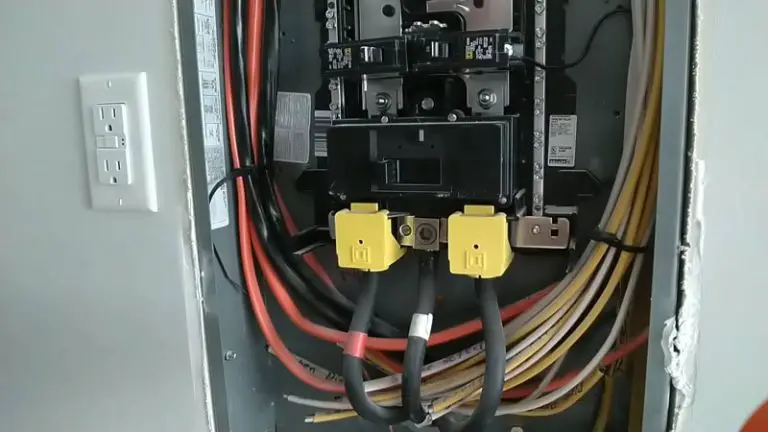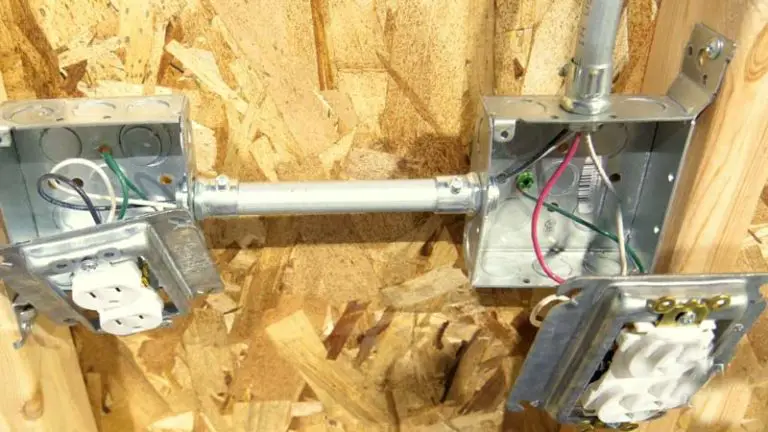What Happens If You Wire A Light Wrong

If you connect wires to the wrong outlet, it can cause damage to your device or even start a fire. Checking outlet polarity is important for safety and can save you from headaches in the future.
Reversing a lamp socket may not be as intuitive as you think. Doing so could result in an accidental light-up situation. Knowing how to wire devices correctly is essential for keeping yourself safe and preventing damage.
You'll Learn About
What Happens If You Wire A Light Wrong?
Damage to your electrical system can occur if wires are connected to the wrong outlet. Checking outlet polarity is crucial for safety, as reversed connections can cause dangerous sparks and fires.
When replacing a lamp or switch, be sure to reverse the wiring before connecting it. This ensures there’s no risk of electric shock. If you ever have trouble with an appliance and don’t know how to fix it, consult a professional first.
They’ll be able to connect the wires in the correct order and avoid any potential damage.
Connecting Wires To The Wrong Outlet Can Cause Damage
Improper wiring can result in a dangerous situation. It may even lead to a fire. It is important to take the time to correctly wire your light fixtures. This minimizes the risk of damage or injury.
If you do make a mistake, don’t panic. There are steps you can take to correct it without causing further damage. Make sure all wires are properly insulated and tagged before connecting them together. This makes troubleshooting much easier if something goes wrong later on.
Remember: always read the manufacturer’s instructions when wiring anything up. Stay safe by following these guidelines.
Positivity (Or Negativity) Polarity Matters
Improper wiring can result in a dangerous situation. Be sure to get it right the first time. Positivity (or negativity) polarity matters when it comes to electricity. Always follow the correct procedure for your device or appliance.
If you have any questions about wiring or installing an electric fixture, don’t hesitate to consult a professional. Electrical wires and cords are often color-coded for easy identification. Use this information as you work. Be safe when working with electricity. Take proper precautions and heed all warnings before starting any project.
Checking Outlet Polarity is Crucial For Safety
Improperly wired outlets can pose a serious electrical hazard. It’s important to double-check the polarity of your light before wiring it in place. Checking out the outlet’s polarity is key for safety reasons. Please don’t skip this step.
If you made a mistake and wired an outlet incorrectly, don’t worry. There are usually simple fixes available. Keep your home safe by checking out outlet polarity before connecting any cords.
Reverse-Placing A Lamp Socket May Cause It To Light Up
If you wire a light wrong, it can cause electrical problems. These may require professional help to fix. It’s important to be aware of the proper way to wire a lamp and socket. This ensures your home is safe and sound.
You may have difficulty turning on the light if you reverse-place the bulb socket. Make sure all wires are covered when wiring an appliance. This is for safety reasons. Follow these simple rules when wiring lamps and sockets for optimal performance:
The ground must be connected to a screw on the base of the fixture. Live wires should never touch each other. Neutral should always go out through the grounding lug.
What happens if you wire live and neutral wrong in a light?
If you wire live and neutral wrong in a light, there is a risk that the electricity will flow through the light instead of the fixture. This can cause it to break or catch on fire.
Improper Wiring Can Cause Electrical Shock
If you make a mistake when wiring your light, it could result in an electrical shock. This problem can occur if you accidentally touch live wires with neutral wires. It can also happen if there is an improper ground connection. If this happens, your vehicle might not start. The ground Fault Detectors may not work correctly.
Ground Fault Detectors May Not Work Correctly
The ground fault circuit interrupter (GFCI) is designed to protect people from electric shocks. These can be caused by malfunctioning lights and other appliances in their homes. When these devices detect a short circuit, they will trip the breaker. This prevents anything from happening to you or your car.
However, if the GFCI doesn’t get triggered often enough because of faulty wiring, it may not be able to turn off the power completely. This could lead to an electrical shock.
Live Wires Might Touch Neutral Wire, Causing A Short Circuit
One way that improperly wired lights can cause problems is through contact between live wires and neutral wires. This can create a short circuit.
This type of accident usually results in damage to property. It also poses a safety hazard for those who are nearby when it occurs.
Can wiring a light switch wrong cause a fire?
Wiring a light switch can sometimes be wrong. This can cause it to short out and create an electrical fire. This is particularly dangerous if the switch is in a highly-populated area. It is also dangerous if it is near sources of ignition like candles or pilot lights.
If you see smoke or hear an alarm from your house wiring, check to see if there’s any damage done by the short circuit.
A Faulty Light Switch Can Cause An Overheating Problem
If your light switch is not working properly, the faulty wiring could result in an overheating problem. This can happen in your home or office.
This issue can cause a range of problems. These include mildew and water damage. It can also lead to complete electrical failure.
Wiring Issues May Lead To Intermittent Currents
A bad connection on the light switch can create intermittent currents. These might exceed safety limits and potentially start a fire. In addition, poorly installed switches may also lead to contact burns. This can happen if they are touched while the broken circuit breaker is still energized.
Light Switch Can Cause A Fire hazard
Broken contacts on the light switch can easily ignite flammable materials. These include curtains or clothing if they come into contact with them. In the worst-case scenario, this could result in a serious burn injury. This could happen to you or someone else in your home or office space.
Touching The Broken Circuit Breaker
Bulbs attached to lights should be at least 2 inches away from any exposed metal parts. These include breakers, screws, etc on the wall. This ensures there’s no chance of them touching and shorting out against each other. This would then cause an electric shock. Poor installation might also allow bulbs to touch these metal surfaces. This could spark and set off a fire – always use UL-approved lamps when possible.
What happens if you reverse the wires on a light switch?
If you accidentally reverse the wires on a light switch, damage may occur. Reversing the wires on an outlet can cause lamps to turn off and unplug. Wire-wrap tampering may occur if you don’t have the proper tools to remove the old electrical panel. It can also happen if improper installation is done.
Improper wiring of switches can lead to serious problems. These include fire and even injury. Make sure you know how to wire a light switch before trying this at home. It could save your life.
What happens if you mix up the hot and neutral wires?
If you accidentally mix up the hot and neutral wires, first check all wiring connections to be sure they are correct. If necessary, restore power by turning off the breaker or unplugging the appliance.
Repair or replace damaged wires as needed. Test out the outlet and switching devices after repairs are completed. This ensures everything is working properly. Be aware of the signs of a shock hazard when completing electrical repairs. Stay safe.
Can Reverse polarity cause a fire?
Reverse polarity can cause a fire when an electrical device is plugged in with the incorrect wire orientation. A short circuit, shock, or fire can also occur if you plug in a device incorrectly and reverse its polarity.
Always be aware of your surroundings when using appliances and electronics. Make sure they are properly grounded to avoid any potential dangers. Keep all wires neatly organized. This reduces the chance of tripping over them accidentally and causing a hazard.
Does it matter if live and neutral are reversed?
It is important to be aware of the polarity of electricity before you begin any electrical work. If an appliance is connected with reversed polarity, it may not work properly. It could even cause damage.
Checking your outlets for reversed polarity can help avoid complications in the future. Always make sure that all your appliances are compatible with reversed voltage. Do this before moving forward with any wiring projects.
Remember: always use caution when working with electricity. Reversing its flow could lead to dangerous consequences.
Will a light fixture work if wires are crossed?
Make sure all wires are connected correctly. Also, ensure the polarity of your circuit breakers is correct before turning on any electrical lights or fixtures.
Check out the wire lengths to make sure they’re adequate for your needs. Replace any dead or damaged components as needed. Disconnect and replace any crossed wires with fresh, unbroken ones. This avoids damage to your fixture or wiring system in general.
Also Read – What Is The Problem With Stab-lok Breakers
To Recap
If you wire a light wrong, it can cause damage to your home or garden. If you’re not sure how to wire a light, consult an electrician. Remember to use the correct voltage and wattage for the light you are wiring.


